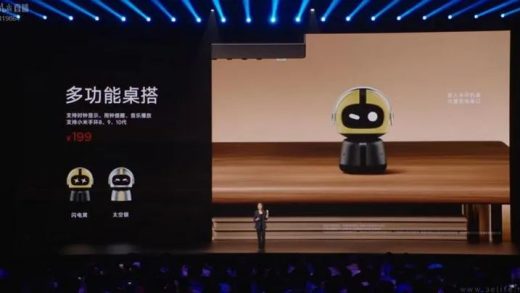1. Industry Risk Analysis
(1) Policy Risk
Currently, the policy risks faced by the maternal and infant home appliance industry are concentrated in the areas of technical standards and subsidy reduction: The state is gradually raising the standards for product safety and energy efficiency (such as the new general safety requirements for infant products), leading to a sudden increase in the pressure of technological iteration; local fiscal subsidies for the consumption of intelligent maternal and infant products are gradually shrinking (for example, many places have cancelled special subsidies for intelligent milk warmers), compressing the gross profit margin of distribution channels; after the implementation of the Data Security Law, the compliance cost of data collection from users of intelligent devices has increased by 30% – 40%; the new cross – border e – commerce regulations have led to double quality inspection costs for the overseas OEM model, weakening the original cost advantage by more than 20%. The industry access threshold has been substantially raised, and small – scale startup companies need to bear an additional compliance transformation cost of 1.5 – 2 million yuan per year.
(2) Economic Risk
From the perspective of economic cycle fluctuations, the maternal and infant home appliance industry currently faces the dual risks of shrinking demand and cost squeeze: During the economic downturn, family consumption tends to be more cautious. The willingness to purchase non – essential maternal and infant small home appliances declines, and the low repurchase rate of segmented categories limits market growth; the prices of upstream raw materials remain high due to the fluctuations in the global supply chain. Coupled with the rising marketing costs caused by fierce industry competition, the profit margins of enterprises continue to narrow. If small and medium – sized entrepreneurs cannot accurately control the rhythm of category innovation and the balance of cash flow, they are likely to fall into the vicious cycle of inventory backlog and price war.
(3) Social Risk
The maternal and infant home appliance industry faces the risk of a generational gap in consumption concepts: Parents of the post – 90s and Generation Z pursue high – value and intelligent products, but the economic downward pressure weakens their ability to pay a premium; the excessive anxiety of the new generation about “scientific parenting” has given rise to a bubble of pseudo – demand, while traditional practical products have difficulty in establishing differentiated competition; the conflict of parenting concepts between generations shortens the product life cycle (for example, the needs in parenting scenarios involving grandparents are ignored); in the environment of information overload, consumers’ decision – making fatigue intensifies, the traffic cost rises, but brand loyalty continues to decline; the stricter environmental protection policies increase the compliance cost, but price – sensitive consumers are not willing to pay for green technologies, creating a profit squeeze dilemma of “high standards and low premiums”.
(4) Legal Risk
The maternal and infant home appliance industry faces the risk of penalties for sub – standard product quality and safety certification (such as product recalls due to failure to pass the CCC certification or international standards); there are potential risks of violating the Advertising Law in promotional language (such as exaggerating the effects of “radiation – free” and “promoting development”); there are disputes over product design patent infringement (which may easily lead to patent lawsuits for appearance or function); there are risks of data privacy compliance (the collection of infant physical sign data by intelligent devices needs to comply with the Personal Information Protection Law); there are penalties for non – compliance in the use of environmental protection materials (failure to meet the heavy metal content limit standards for infant products); there are international trade compliance issues in cross – border sales (lack of access permits for infant electrical appliances in the exporting country) and other legal regulatory challenges.
2. Entrepreneurship Guide
(1) Suggestions for Entrepreneurship Opportunities
Focusing on the directions of intelligence, scenario – based solutions, and health management, entrepreneurs in the maternal and infant home appliance industry can develop cost – effective intelligent single products (such as a two – in – one milk warmer and ultraviolet disinfection device), create scenario – based solution packages for bedrooms or travel (a portable on – board constant – temperature milk – making machine + an intelligent disinfection storage bag), and use Internet of Things technology to digitize parenting behaviors (monitoring the temperature and frequency of milk – making to generate feeding reports). Develop low – sensitivity material home appliances for infants with sensitive skin (an air circulation fan with an anti – allergic coating), and integrate children’s health monitoring functions (an electric nasal aspirator with body temperature monitoring + abnormal warning). In the sinking market, modular products with basic functions can be launched (a mini constant – temperature kettle + age – specific modes), and value – added services of leasing + consumables can be promoted through community channels (disinfector leasing + filter subscription).
(2) Suggestions for Entrepreneurship Resources
Entrepreneurs in the maternal and infant home appliance industry should focus on the integration of light – asset resources. They should preferentially adopt the ODM model and cooperate with mature OEM factories to quickly launch products, and reduce hardware investment costs by sharing the quality inspection system; cooperate with community maternal and infant stores and maternity centers to establish experiential distribution channels, and reuse their customer trust resources to reduce market education costs; connect with the special subsidies for smart home products and the industrial chain incubator resources in local government science and technology innovation parks to obtain policy financial support; cooperate with university industrial design institutes and maternal and infant KOLs to establish a user co – creation laboratory to obtain product innovation insights at low cost; connect with the after – sales service system of mature home appliance brands to outsource service resources and avoid the heavy – asset risk of building self – owned service outlets.
(3) Suggestions for Entrepreneurship Teams
Entrepreneurs in the maternal and infant home appliance industry need to form a composite team with product R & D, maternal and infant market insight, and compliance experience. The core members should include home appliance hardware engineers (to solve safety and functional innovation problems), senior operators in the maternal and infant industry (to accurately grasp the pain points in users’ parenting scenarios), and supply chain experts (to ensure that products meet national standards for infant products and environmental protection certifications). The founder needs to have resource – integration ability and reserve more than 15% of the equity to attract maternal and infant KOLs or pediatric expert consultants. Adopt a dual – line management model of “product manager + user experience officer”, and iterate products through more than 50 hours of real – family – scenario testing. The team should keep 25% of its members with cross – industry experience to cope with the trend of technological integration in intelligent parenting devices.
(4) Suggestions for Entrepreneurship Risks
Entrepreneurs in the maternal and infant home appliance industry should focus on niche markets and give priority to developing differentiated functional products (such as ultraviolet baby bottle disinfectors and intelligent constant – temperature milk warmers) to avoid direct competition with established brands in conventional categories; establish a three – level quality control system from raw materials to factory – leaving inspection, focusing on monitoring core safety indicators such as bisphenol A residues in plastic parts and radiation values of electronic components, and conduct monthly random inspections by third – party institutions to avoid recall risks; reserve 30% production capacity flexibility when building a flexible supply chain. For components such as chips and lithium batteries that are easily affected by international situations, reserve at least two alternative suppliers certified by ISO9001; adopt a combined strategy of “KOC experience officers + medical institution endorsements” during the promotion stage, design a 30 – day no – reason return service for lactating women, and collect user experience data in real – time through WeChat groups to upgrade at least two functions to solve user pain points every month.





